Studies On Residential Power Line Noise - Part 9 - PS Audio P5 AC Regenerator

DarqueKnight
Posts: 6,765
Introduction
The PS Audio Power Plant Premier (PPP) AC regenerator in my two channel system was replaced with a PS Audio PerfectWave P5 AC regenerator. Like many PPP owners, I was on the fence about "upgrading" from the PPP to the P5 because I wasn't sure the benefit, if any, would justify the expense. The P5 retails for $1305 more than the PPP ($3000 vs. $1695) and there are only minor differences in most of their performance specifications. Plus, the P5 has two less outlets than the PPP and the P5's continuous output power is 1/3 less than the PPP. It would seem like you are paying more for less. However, the P5 offers important upgrades in energy storage and energy delivery over the PPP which translate to a much better stereophonic presentation. After the first day, I could hear that the cost premium was justified. There was significant improvement in stereophonic performance parameters: more image weight, more depth, more bass weight and articulation and more fine detail.
The significantly lowered output impedance is important because it directly affects transient performance. Music signals have many peak power demands (transients) that last for only a small fraction of a second. The ability to cleanly and accurately reproduce such transients, particularly low frequency transients, contributes to the realism of sterophonic music reproduction.
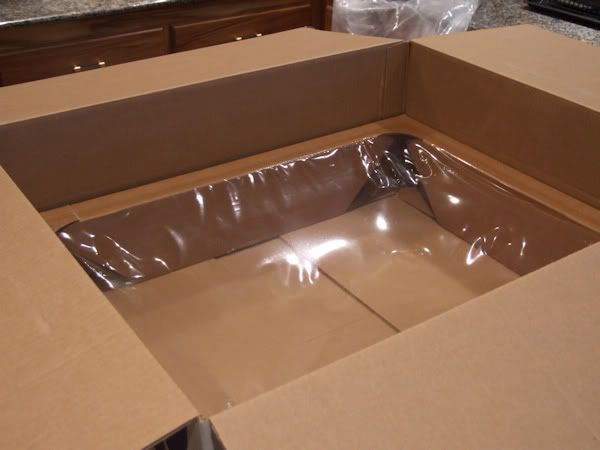
Figure 1. The P5 is shipped double-boxed. The inner box contains an upper and
lower corrugated cardboard frame that surrounds and suspends the P5 in a tough
plastic bubble.
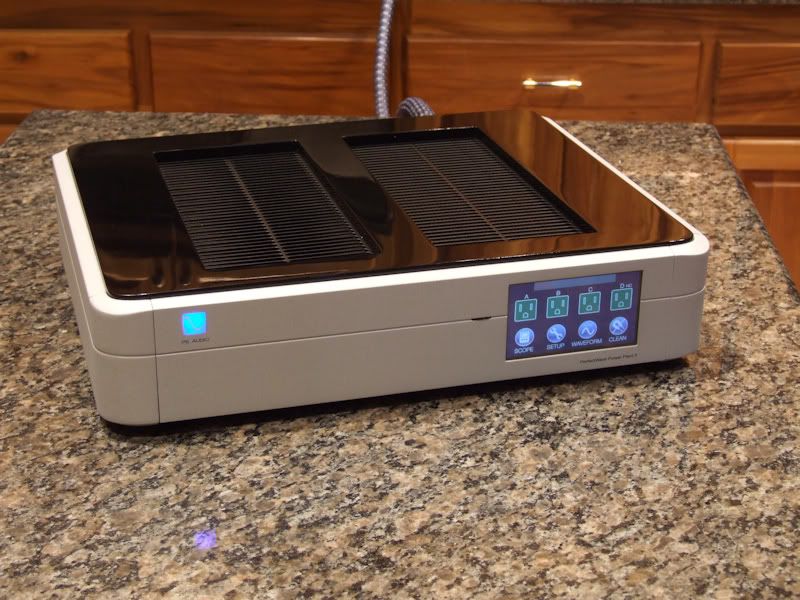
Figure 2. Sleek and elegant! The fit and finish of the P5 was excellent.
The PPP's case rang like a church bell. The P5's case is much better damped. Knocking on the P5's case in every location except for the upper side panels produced a solid dull thud. Knocking on the upper side panels produced a hollow sound.
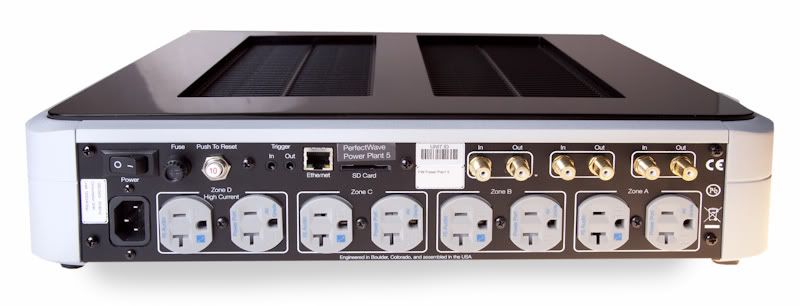
Figure 3. P5 Rear. I didn't like the sideways turned outlets. Having to reach behind the unit and twist the
connectors of thick, stiff (1" diameter) power cables sideways was not fun.
The P5's user interfaces are the remote control, the front panel touch-screen and the online GlobalNet interface. The touch-screen provides a variety of menus for status reporting and control. I like the oscilloscope function that shows the input waveform, output waveform and the noise difference between the two.
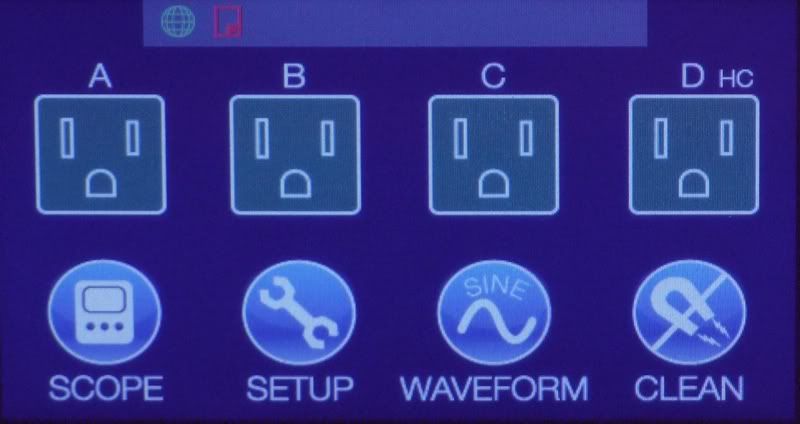
Figure 4. P5's Home Screen.
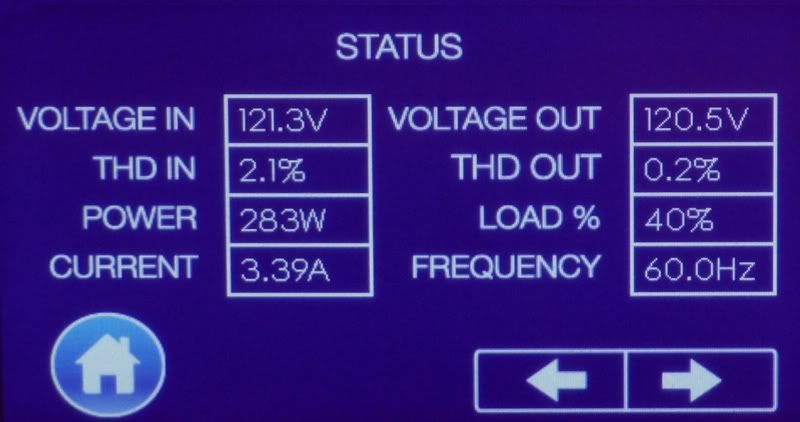
Figure 5. P5's Status screen.

Figure 6. P5 Voltage Out Waveform screen.
There were two errors in the P5 manual (which must be downloaded from the PS Audio website):
Page 7: "Naming output receptacle #1, Zone A: By selecting the green "setup" button next to that zone, the screen will change to a keyboard interface upon which letters and numbers can be touched to name that zone. Generally, users of the Power Plant 5 will name said output receptacle by that which is connected. For example "DAC" or "Power Amp" or "Turntable"."
CORRECTION: Output receptacles can only be named through the online GlobalNet interface. PS Audio said the keyboard interface will be activated in a future firmware update.
Page 10: "After its activation, but before the P5 fully initializes and enters the HOME SCREEN, the unit?s front-panel touch-screen can be touched anywhere on its face. This will bring the user to the SYSTEM SETUP SCREEN where the following parameters are displayed:
1. Unit ID
2. Bootloader
3. Firmware
4. Power Meter
5. Oscillator
6. Web
7. Dimmer"
CORRECTION: The System Setup Screen can only be accessed by touching the PS Audio logo in the center of the touch-screen as the P5 is initializing.
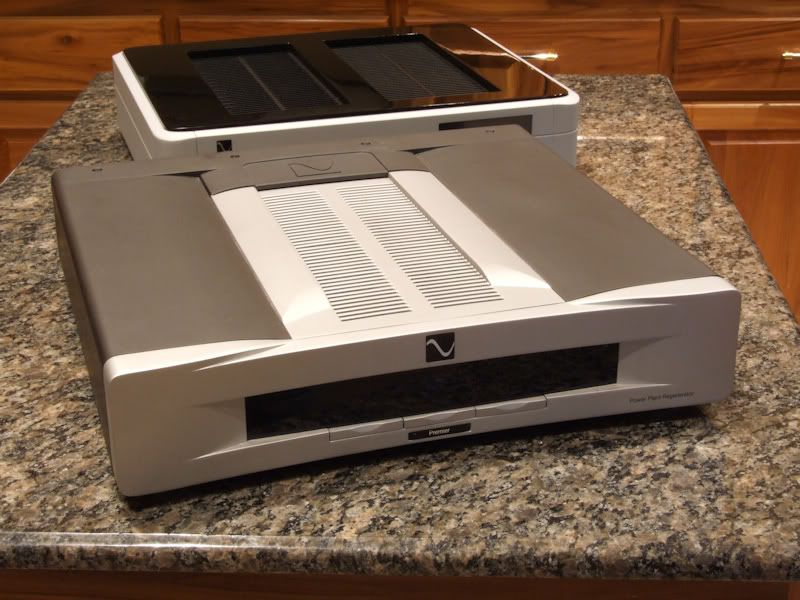
Figure 7. P5 and the PPP it replaced.
My initial plan was to move the PPP to my test rig. Apparently, the PPP did not appreciate being demoted to test rig duty. Immediately after turning on the PPP in its new location, it went into protection mode (as evidenced by a slow clicking sound). I rebooted the PPP and it went right back into protection mode. It was sent back to PS Audio for repair, which they did free of charge even though the unit was out of warranty. I had not had any trouble with it during the over three years it had been in my two channel system.
Three of the four PPP's I own have had to go back to PS Audio for repair. In each case there was a component failure in the regenerator circuit.

Figure 8. P5 installation in two channel equipment cabinet.
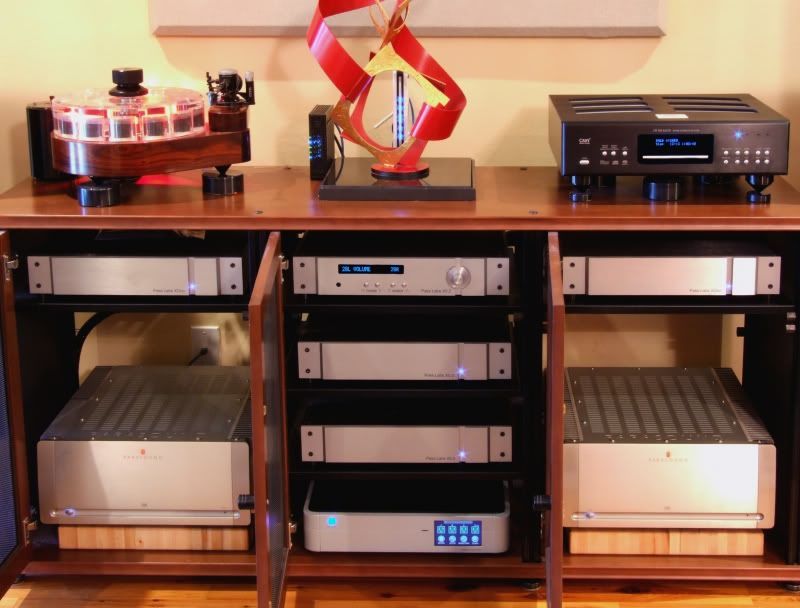
Figure 9. P5 installation in two channel equipment cabinet.
Online GlobalNet Interface
After a P5 is registered on the PS Audio website, the owner is able to monitor status and control certain functions through a web page interface. Individual power zones, as well as the entire unit, can be turned on and off remotely over the web interface. I (and other P5 owners) questioned the frequent voltage surges that appeared in the output voltage measurements. PS Audio confirmed that the voltage spikes shown in figure 10 are due to a bug in the P5's firmware. A firmware update to correct the bug is in progress.
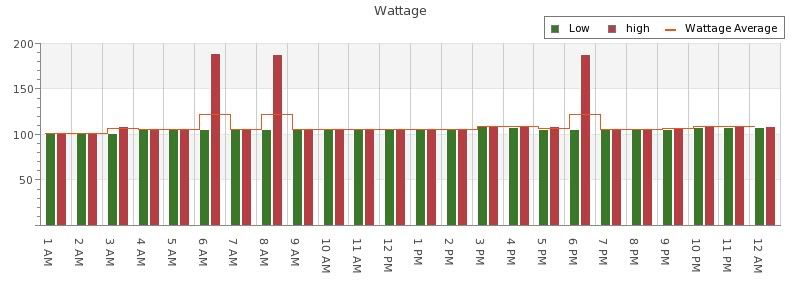
Figure 10. P5 voltage vs. time report from web interface.
The PS Audio Power Plant Premier (PPP) AC regenerator in my two channel system was replaced with a PS Audio PerfectWave P5 AC regenerator. Like many PPP owners, I was on the fence about "upgrading" from the PPP to the P5 because I wasn't sure the benefit, if any, would justify the expense. The P5 retails for $1305 more than the PPP ($3000 vs. $1695) and there are only minor differences in most of their performance specifications. Plus, the P5 has two less outlets than the PPP and the P5's continuous output power is 1/3 less than the PPP. It would seem like you are paying more for less. However, the P5 offers important upgrades in energy storage and energy delivery over the PPP which translate to a much better stereophonic presentation. After the first day, I could hear that the cost premium was justified. There was significant improvement in stereophonic performance parameters: more image weight, more depth, more bass weight and articulation and more fine detail.
Table 1. PPP-P5 Performance Specification Differences


The significantly lowered output impedance is important because it directly affects transient performance. Music signals have many peak power demands (transients) that last for only a small fraction of a second. The ability to cleanly and accurately reproduce such transients, particularly low frequency transients, contributes to the realism of sterophonic music reproduction.

Figure 1. The P5 is shipped double-boxed. The inner box contains an upper and
lower corrugated cardboard frame that surrounds and suspends the P5 in a tough
plastic bubble.

Figure 2. Sleek and elegant! The fit and finish of the P5 was excellent.
The PPP's case rang like a church bell. The P5's case is much better damped. Knocking on the P5's case in every location except for the upper side panels produced a solid dull thud. Knocking on the upper side panels produced a hollow sound.

Figure 3. P5 Rear. I didn't like the sideways turned outlets. Having to reach behind the unit and twist the
connectors of thick, stiff (1" diameter) power cables sideways was not fun.
The P5's user interfaces are the remote control, the front panel touch-screen and the online GlobalNet interface. The touch-screen provides a variety of menus for status reporting and control. I like the oscilloscope function that shows the input waveform, output waveform and the noise difference between the two.

Figure 4. P5's Home Screen.

Figure 5. P5's Status screen.

Figure 6. P5 Voltage Out Waveform screen.
There were two errors in the P5 manual (which must be downloaded from the PS Audio website):
Page 7: "Naming output receptacle #1, Zone A: By selecting the green "setup" button next to that zone, the screen will change to a keyboard interface upon which letters and numbers can be touched to name that zone. Generally, users of the Power Plant 5 will name said output receptacle by that which is connected. For example "DAC" or "Power Amp" or "Turntable"."
CORRECTION: Output receptacles can only be named through the online GlobalNet interface. PS Audio said the keyboard interface will be activated in a future firmware update.
Page 10: "After its activation, but before the P5 fully initializes and enters the HOME SCREEN, the unit?s front-panel touch-screen can be touched anywhere on its face. This will bring the user to the SYSTEM SETUP SCREEN where the following parameters are displayed:
1. Unit ID
2. Bootloader
3. Firmware
4. Power Meter
5. Oscillator
6. Web
7. Dimmer"
CORRECTION: The System Setup Screen can only be accessed by touching the PS Audio logo in the center of the touch-screen as the P5 is initializing.

Figure 7. P5 and the PPP it replaced.
My initial plan was to move the PPP to my test rig. Apparently, the PPP did not appreciate being demoted to test rig duty. Immediately after turning on the PPP in its new location, it went into protection mode (as evidenced by a slow clicking sound). I rebooted the PPP and it went right back into protection mode. It was sent back to PS Audio for repair, which they did free of charge even though the unit was out of warranty. I had not had any trouble with it during the over three years it had been in my two channel system.
Three of the four PPP's I own have had to go back to PS Audio for repair. In each case there was a component failure in the regenerator circuit.

Figure 8. P5 installation in two channel equipment cabinet.

Figure 9. P5 installation in two channel equipment cabinet.
Online GlobalNet Interface
After a P5 is registered on the PS Audio website, the owner is able to monitor status and control certain functions through a web page interface. Individual power zones, as well as the entire unit, can be turned on and off remotely over the web interface. I (and other P5 owners) questioned the frequent voltage surges that appeared in the output voltage measurements. PS Audio confirmed that the voltage spikes shown in figure 10 are due to a bug in the P5's firmware. A firmware update to correct the bug is in progress.

Figure 10. P5 voltage vs. time report from web interface.
Proud and loyal citizen of the Digital Domain and Solid State Country!
Post edited by DarqueKnight on
Comments
-
Break In Procedure
At the time of this review, my two channel system consisted of:
Pass Labs X0.2 Line Level Preamp,
Pass Labs Xono Phono Preamp,
Cary Audio CD 306 Pro SACD Player,
Teres Audio Model 255 Turntable,
Graham Phantom B44 Tonearm,
Ortofon MC Windfeld Phono Cartridge,
Parasound Halo JC 1 Monoblock Power Amps,
Polk Audio SDA SRS 1.2TL speakers (4 Ohms Nominal Impedance, Highly Modified),
AudioQuest Sky XLR Interconnects,
AudioQuest Everest Speaker Cables,
AudioQuest LeoPard Tonearm Cable,
Salamander Synergy Triple 30 Audio Cabinet,
PS Audio AC-12 Power Amp and P5 Power Cables,
PS Audio Premier SC Source Component Power Cables.
The JC 1's are on separate dedicated 20 amp AC circuits terminated with PS Audio Soloist Premier SE in-wall conditioners. The P5 is also on its own dedicated 20 amp circuit terminated with a PS Audio Soloist Premier SE.
Only the preamps and source components are connected to the P5. The P5 cannot handle the current demands of even one JC 1 power amp. Plugging in the right side JC 1 caused the sound stage to collapse with a loss of speed, detail and articulation in the bass. Plugging in the left side JC 1 caused the P5 to go into protection mode and shut down.
I let the P5 warm up for 24 hours prior to installation. During warm-up time, I checked all functions and measured the input and output voltages with an oscilloscope and a multimeter.
The sonic improvements with the Power Plant Premier were evident immediately after installation. In contrast, the initial sound of the P5 was ugly and veiled. Sound stage width shrank to the vertical midpoint of each speaker. The rhythm and pace of music was slower. Bass was less defined and less articulate ("wooly" but not "muddy"). After five hours, the P5 "loosened up" and the sound became the equal of the PPP. After eight hours, I began hearing more image weight and ambient information compared to the PPP. There was also more depth and image definition, especially on orchestral recordings.
After an additional 30 hours under load, I began hearing more bass slam, bass articulation and more overall detail.
The two channel system's preamps and source components only offered a 14% load to the P5 (1.2 Amps, 108 watts). I ran the P5 at 14% load for the first 39 hours. For a more thorough and efficient break in process, I added secondary components to increase the reactive load as follows:
Yamaha C-80 Preamp
Sony ST-S730ES Tuner
Adcom GFA-5500 Power Amp
Polk Audio CRS+ Speakers (4 Ohms Nominal Impedance, Highly Modified)
The additional components increased the load to 41% (3.46 Amps, 289 watts). After 95 hours at 41% load, I added a second Adcom GFA-5500 Power Amp, which was left idling. This increased the load to 60% (4.95 Amps, 400 watts). During normal listening hours I would listen to music through the two channel system. Overnight and while at work, I let the tuner play through the secondary system.
I use a home made simple test and conditioning rig for power cables and AC receptacles (the Juice Cyclone). It consists of a long board with three incandescent light bulb receptacles connected in parallel. The receptacles are independently switched. More details on the Juice Cyclone can be found here: JuiceCyclone Power Cable Conditioner
Connecting the Juice Cyclone to the P5 with two 200 watt bulbs increased the load to 89% (7.5 Amps, 788 watts). This was with all audio components idling. If I played music, the load increased to 90% and the yellow (not orange as the manual states) warning symbol came on at the top of the Home Screen. Adding an additional 100 watt bulb increased the load to 98% (8.21 Amps, 888 watts).
I was impressed with the stability of the P5's power quality and with the stability of sound quality as the load increased. I heard no change in sound quality among the 14%, 40%, 60% and 90% load conditions. This was while the speakers were outputting an average 90 dB-C for hours. After 1 hour at 98%, I heard an overall loss of detail and smearing of bass. Reducing the load to 90% immediately returned the sound to normal.
The output total harmonic distortion was stable, between 0.2% and 0.3% as the load ranged from 14% to 98%. Most of the time it was 0.2%, even under the 98% load condition.
The P5 displayed excellent thermal stability. At a load of 40% or below, the P5 ran cooler than my Pass Labs X0.2 line level preamp. After 2 hours at 40% load playing music at an average 90 dB-C, the case top temperature of the X0.2 preamp was 92.7 degrees F. The P5's temperature (measured with a digital thermometer laid on the amplifier circuit vents) was 88.7 degrees F. After 4 hours at 60% load, the P5's temperature was 94 degrees F. After 12 hours at 90% load, the temperature was 102 degrees F. After 1 hour at 98% load, the temperature was 105 degrees F.
The fan is whisper quiet. Even from 6" away I only heard a faint hum rather than the familiar "whoosh". I could not hear the fan from 3 feet away.
The sonic changes throughout the burn in process are summarized in table 2.Table 2. P5 Sonic Changes Throughout Burn In.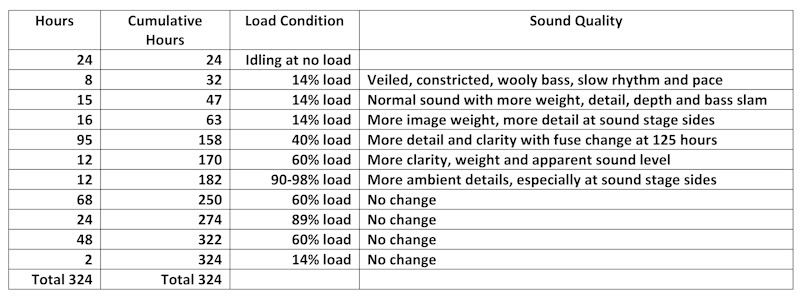
Summary of Audible Improvements [Note: I listen mostly to instrumental jazz recordings.]
1. The P5 is as big a difference in sound quality over the PPP as the PPP was over the wall.
2. Sound stage depth increased, but not width.
3. More image weight and clarity, especially at the sound stage sides.
4. Much higher quality bass reproduction: more slam, detail, clarity, articulation and speed.
5. More of a sense of holographic 3-dimensionality.
6. More fluidity in mid-range and high frequencies.
7. More fine details, particularly ambient noises reflected from the recording space walls.
8. More tactile sensation against my body and more bass vibrations coming through the floor, armrests and seat.
Fuse Replacement
The P5 uses a small size (5mm x 20mm) 5 amp slow blow fuse. After 125 hours, I replaced the P5's fuse with a HiFi Tuning Supreme fuse and I heard more fine details such as singer breathing noises, reed and mouthpiece noises, ambient room reflections and piano and bass note overtones and decay.
Under no load conditions, the output total harmonic distortion went from a steady 0.2% to fluctuating between 0.1% and 0.2% after the Supreme fuse was installed.
Curiously, the P5's fuse sounded best when oriented in the "wrong" direction (fuse arrow pointing against the direction of current flow). Other P5 and P10 owners have had the same results.
Measurements
AC waveform and noise spectrum (Fast Fourier Transform) measurements were taken with a Tektronix 2012 digital oscilloscope after the 324 hour burn in process. The P5 plots in figures 13 and 16 are with a HiFi Tuning Supreme fuse installed. The time domain (sine wave) plots of the PPP and P5 are identical. It is easier to see the difference between the regenerator and wall sine waves and the differences between the regenerator and wall FFT plots if the plots are downloaded and viewed in succession.
The noise amplitude and density in the outputs of both regenerators was significantly less than the wall. The P5 demonstrated a moderate reduction in noise amplitude and density compared to the PPP. The P5's output also had less DC content (2 dB less).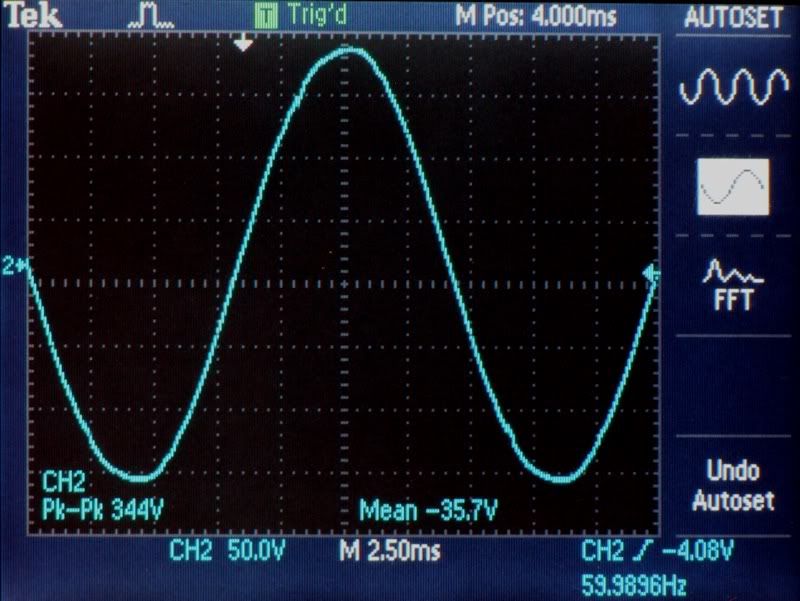
Figure 11. AC sine wave from end of PerfectWave AC power cable plugged into a Soloist SE Premier
in-wall conditioner on a dedicated 20 amp AC circuit.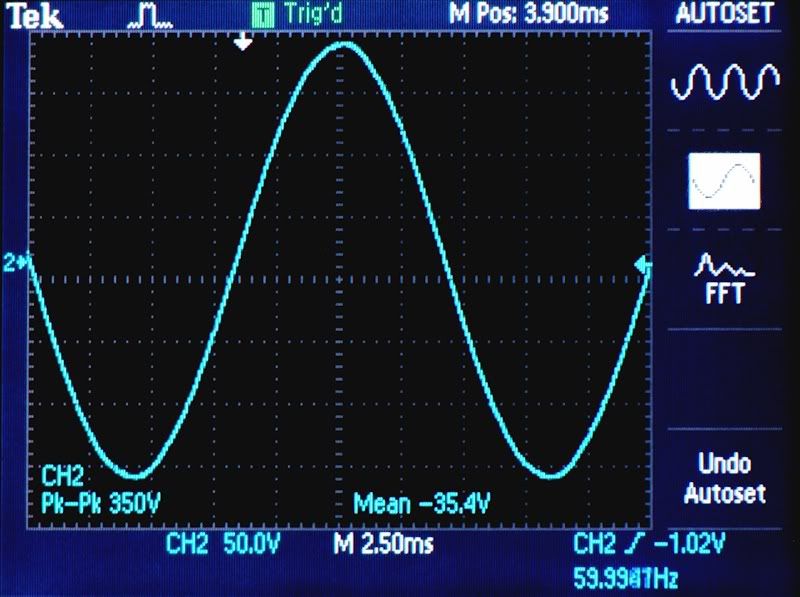
Figure 12. AC sine wave from output of Power Plant Premier.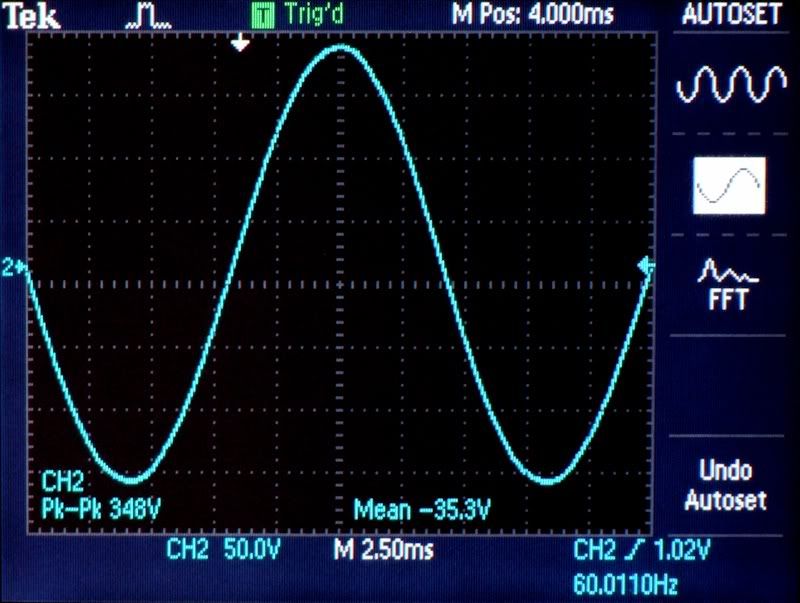
Figure 13. AC sine wave from P5.
Figure 14. FFT plot from end of PerfectWave AC power cable plugged into a Soloist SE Premier
in-wall conditioner on a dedicated 20 amp AC circuit.
Figure 15. FFT plot from output of Power Plant Premier.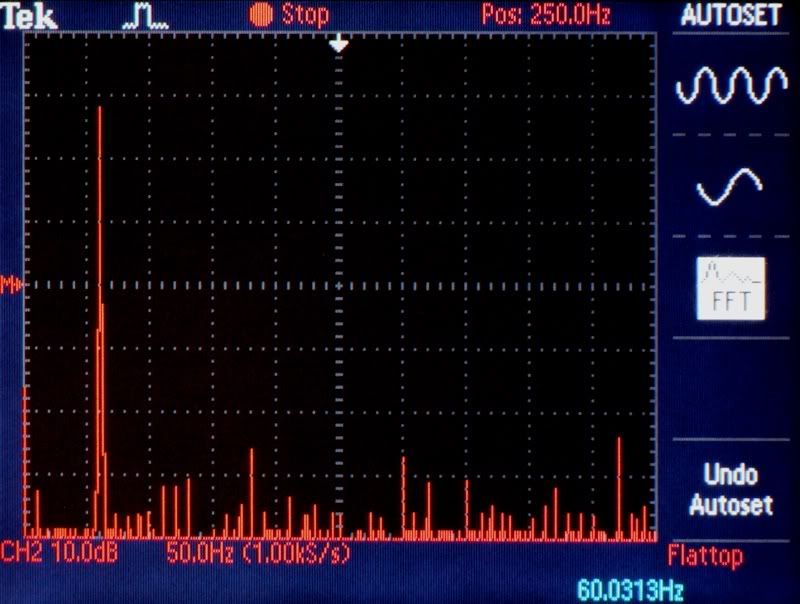
Figure 16. FFT plot from output of P5.
The next two plots show the difference in P5 output noise spectrum with the stock and HiFi Tuning Fuses installed. There was a moderate reduction in noise amplitude and density with the HiFi Tuning fuse. The DC content in the output also dropped by 2 dB with the HiFi tuning fuse.
Figure 17. Post burn in P5 output FFT plot with stock fuse.
Figure 18. Post burn in P5 output FFT plot with HiFi Tuning Supreme fuse.Proud and loyal citizen of the Digital Domain and Solid State Country! -
Nitpicks
I would like to be able to adjust the display brightness with the remote. The display can only be turned on and off with the remote. The display brightness can only be adjusted from the System Setup Screen.
I would like to be able to access the System Setup Screen with the remote.
I would prefer the outlet pairs in the normal upright orientation rather than laid on the side.
Trepidations
The quality issues with the PPP are legendary. I hope such ugliness will not become a part of the P5's (and P10's) history. In 2010, PS Audio introduced some design and component changes that resolved the PPP's remaining reliability issues. The fixes were provided at no cost to the owner (except for shipping back to the factory), even for units out of warranty.
The P5 and P10 were released in January of 2011. There were some firmware issues that were resolved in March 2011 and September 2011 with firmware updates. There are still two minor firmware issues mentioned earlier in this report. My initial intent was to wait a year before trying a P5 in order to make sure all the bugs were worked out. However, I ran across a great deal on a one week old demo unit and I jumped on it. Other incentives were the $1000 trade in allowance for PPP's and the upcoming $500 price increase in December 2011.
Further Study
If you have power amplifiers that are not totally or significantly biased in class-A (like the Parasound JC 1's), then it is possible to power an entire system with one P5. I began to see reports of people who were selling or trading in their P5's for the larger capacity P10, even though they didn't need the extra headroom to power their systems.
It was particularly curious to see P5 owners moving up to the P10 when they were only using a small fraction of the P5's output to run source components and preamplifiers. My source components only presented a 14% load to the P5 (110 watts, 1.20 amps), but I had achieved Such Good Sound with the P5 that I was enticed to hear for myself what all the P10 furor was about.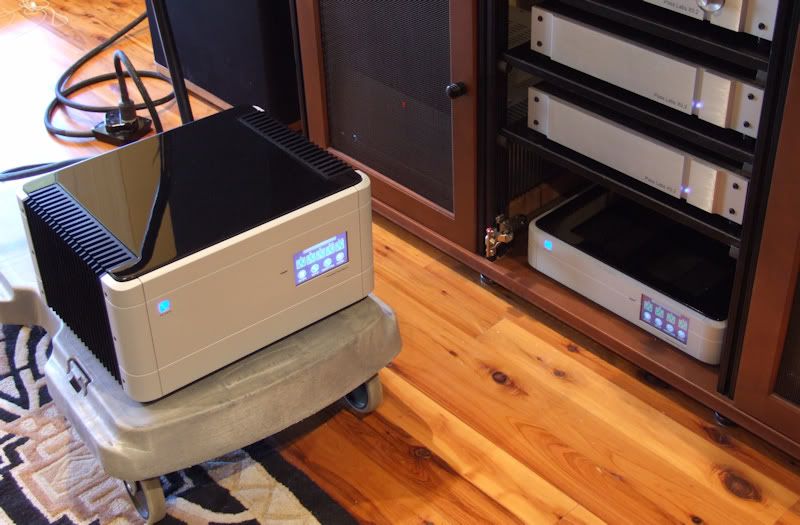
Figure 19. Unlike the PPP, the P5 greeted its potential replacement graciously and without protest.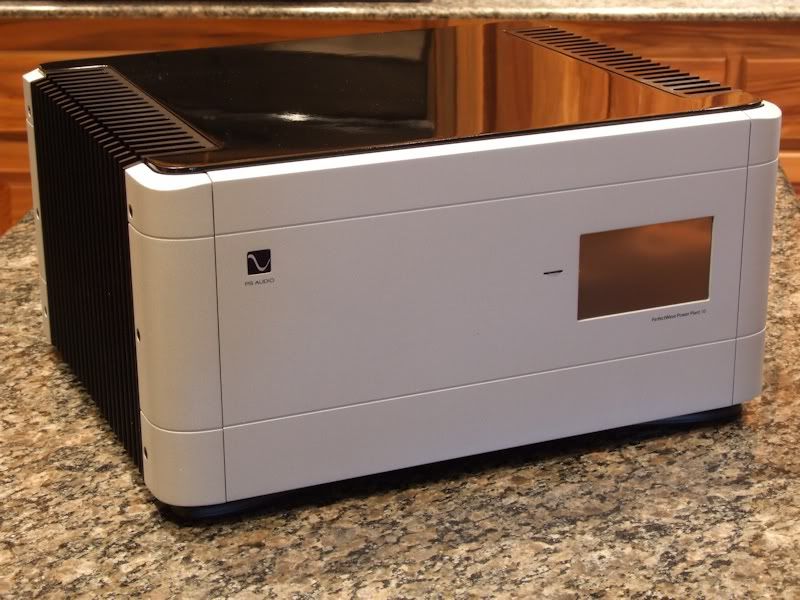
Figure 20. P10 front.
Figure 21. P10 rear. The P10 uses higher grade Power Port Premier outlets. The P5 uses Power Port outlets.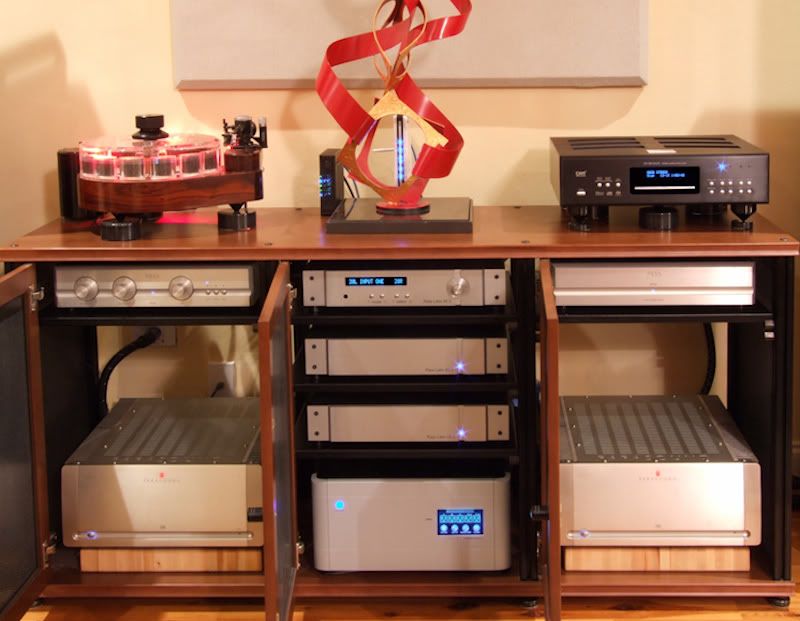
Figure 22. P10 installed.
The P5 was sold. The repaired PPP was traded in for a P10. Now I understand why people are trading in and selling their P5's for P10's: the P10 gives you more of what you like from the P5...but that's a topic for another thread.
References
Studies On Residential Power Line Noise Part 1-Statement SC Power Cord
Studies On Residential Power Line Noise Part 2-Statement SC Power Cord
Studies On Residential Power Line Noise Part 3-PS Audio Power Plant Premier
Studies On Residential Power Line Noise Part 4-PS Audio Premier SC Power Cord
Studies On Residential Power Line Noise Part 5-PS Audio Power Port Premier
Studies On Residential Power Line Noise Part 6-PS Audio Soloist Special Edition
Studies On Residential Power Line Noise Part 7-HiFi Tuning and Isoclean Fuses
Studies On Residential Power Line Noise Part 8-Audio Grade Fuses For Home TheaterProud and loyal citizen of the Digital Domain and Solid State Country! -
The P10 looks like a beast!"He who fights with monsters should look to it that he himself does not become a monster. And when you gaze long into an abyss the abyss also gazes into you." Friedrich Nietzsche
-
It is a beast to those nasty power line gremlins. I need to get another one to run my home theater system.Proud and loyal citizen of the Digital Domain and Solid State Country!
-
I would prefer the outlet pairs in the normal upright orientation rather than laid on the side.
Nice review, as usual.
I would guess the benefit to the horizontal outlet is that with heavy power cords plugged into it, as the power cords pull down on the connector the electrical contact is enhanced versus if they were pulling down on vertical oriented outlets. Apparently, they were looking at all details, large and small, when they upgraded.Lumin X1 file player, Westminster Labs interconnect cable
Sony XA-5400ES SACD; Pass XP-22 pre; X600.5 amps
Magico S5 MKII Mcast Rose speakers; SPOD spikes
Shunyata Triton v3/Typhon QR on source, Denali 2000 (2) on amps
Shunyata Sigma XLR analog ICs, Sigma speaker cables
Shunyata Sigma HC (2), Sigma Analog, Sigma Digital, Z Anaconda (3) power cables
Mapleshade Samson V.3 four shelf solid maple rack, Micropoint brass footers
Three 20 amp circuits. -
That P10 is a beauty....but at 5 grand, out of my league. Nice review as always though.HT SYSTEM-
Sony 850c 4k
Pioneer elite vhx 21
Sony 4k BRP
SVS SB-2000
Polk Sig. 20's
Polk FX500 surrounds
Cables-
Acoustic zen Satori speaker cables
Acoustic zen Matrix 2 IC's
Wireworld eclipse 7 ic's
Audio metallurgy ga-o digital cable
Kitchen
Sonos zp90
Grant Fidelity tube dac
B&k 1420
lsi 9's -
That P10 is a beauty....but at 5 grand, out of my league.
There are power quality improvement options for every budget. I started out years ago with higher performance, yet modestly priced, power cords.Proud and loyal citizen of the Digital Domain and Solid State Country! -
Thanks for the excelent write up. Your system is drop dead gorgeous!
-
Thank you. This is my system when it was a baby.
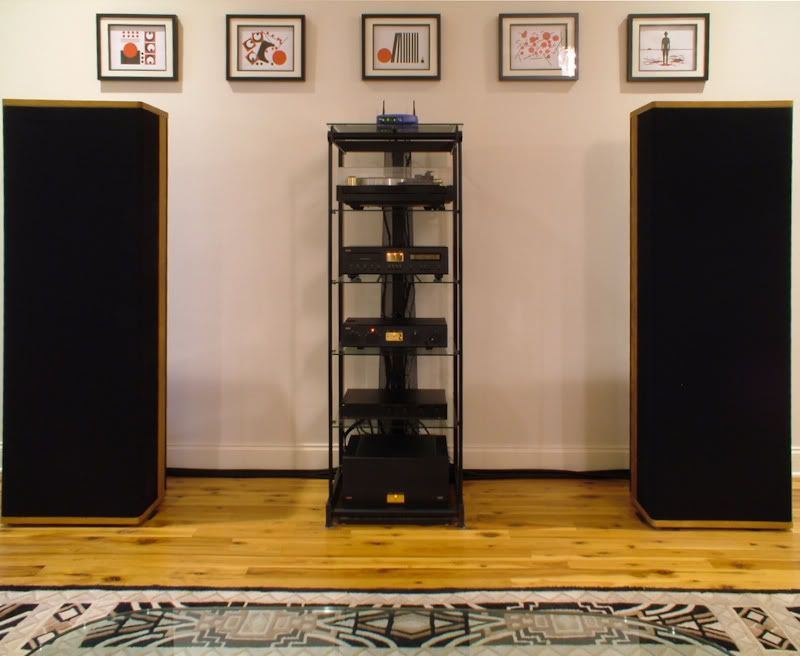
Two channel audio system in 2003.Proud and loyal citizen of the Digital Domain and Solid State Country! -
Once again DarqueKnight, my hats off to you on putting together a very nice system. I could tell it was early 2000's by the Linksys route on top of the rack. How did you like the Yamaha PF-800 (I believe) turntable?
-
How did you like the Yamaha PF-800 (I believe) turntable?
You are correct: that is a PF-800. I liked it enough to own three of them (concurrently).
Some discussion can be found here:
Rediscovering Vinyl: Music Hall MMF 9 and Yamaha PF-800 Turntables Pt. 1Proud and loyal citizen of the Digital Domain and Solid State Country! -
Thank goodness you moved beyond the Adcom phase Raife.CTC BBQ Amplifier, Sonic Frontiers Line3 Pre-Amplifier and Wadia 581 SACD player. Speakers? Always changing but for now, Mission Argonauts I picked up for $50 bucks, mint.
-
I'm still fond of those Adcom pieces (particularly the GFA-05802) and would still have them if I hadn't imposed a "no hoarding" rule. I haven't completely moved on from Adcom as my home theater, office and bedroom systems are Powered by Adcom:cheesygrin:.Proud and loyal citizen of the Digital Domain and Solid State Country!
-
Well, if it sounds good, how can you go wrong :twisted:
I've always liked the pre-amp of that series so color me Adcom in the smallest of ways.CTC BBQ Amplifier, Sonic Frontiers Line3 Pre-Amplifier and Wadia 581 SACD player. Speakers? Always changing but for now, Mission Argonauts I picked up for $50 bucks, mint. -
I would guess the benefit to the horizontal outlet is that with heavy power cords plugged into it, as the power cords pull down on the connector the electrical contact is enhanced versus if they were pulling down on vertical oriented outlets. Apparently, they were looking at all details, large and small, when they upgraded.
According to Paul McGowan at PS Audio, this is the reason there are only eight outlets on the P5 and why the outlets are horizontally oriented:
"That's the only way we could squeeze everything into the chassis. Trying to keep the PerfectWave form factor and get everything in was a major challenge."Proud and loyal citizen of the Digital Domain and Solid State Country! -
DarqueKnight wrote: »According to Paul McGowan at PS Audio, this is the reason there are only eight outlets on the P5 and why the outlets are horizontally oriented:
"That's the only way we could squeeze everything into the chassis. Trying to keep the PerfectWave form factor and get everything in was a major challenge."
Okay. That makes sense. Better electrical contact with power cord blades is just a side effect. I am looking at the new Shunyata Triton power conditioner, and they too only have 8 connections in a horizontal configuration.
http://www.musicdirect.com/p-15562-shunyata-hydra-triton-power-conditioner.aspx
Eight outlets suck if you have nine pieces of gear. I know these manufacturers say not to plug a power strip into one of the outlets, but I wonder if it will degrade the power. Have you ever done a measurement with the power out of an outlet, and the power out with a power strip plugged into it? It would be interesting to see if there is any degradation.Lumin X1 file player, Westminster Labs interconnect cable
Sony XA-5400ES SACD; Pass XP-22 pre; X600.5 amps
Magico S5 MKII Mcast Rose speakers; SPOD spikes
Shunyata Triton v3/Typhon QR on source, Denali 2000 (2) on amps
Shunyata Sigma XLR analog ICs, Sigma speaker cables
Shunyata Sigma HC (2), Sigma Analog, Sigma Digital, Z Anaconda (3) power cables
Mapleshade Samson V.3 four shelf solid maple rack, Micropoint brass footers
Three 20 amp circuits. -
I have never measured this since I have never had a need to plug a power strip into one of my regenerators. This question has come up several times on the PS Audio forum. People say they didn't notice any degradation when they used an audio grade power strip.Proud and loyal citizen of the Digital Domain and Solid State Country!
-
JFC! If I had your money bro, I'd burn mine!
Sweet ride you got there man!
1CToo much **** to list.... -
Every time my kids do something that really upsets me, I calm down by spending part of their inheritance on nice audio gear.Proud and loyal citizen of the Digital Domain and Solid State Country!
-
Yaeh, but they will have one sweet setup.
-
I believe you meant to say wattage instead of voltage?DarqueKnight wrote: »Introduction
After a P5 is registered on the PS Audio website, the owner is able to monitor status and control certain functions through a web page interface. Individual power zones, as well as the entire unit, can be turned on and off remotely over the web interface. I (and other P5 owners) questioned the frequent voltage surges that appeared in the output voltage measurements. PS Audio confirmed that the voltage spikes shown in figure 10 are due to a bug in the P5's firmware. A firmware update to correct the bug is in progress.
Figure 10. P5 voltage vs. time report from web interface. -
Proud and loyal citizen of the Digital Domain and Solid State Country!
-
Just wanted to say thanks for the detailed and informative review!
-
thanks for finding this and bumping it up

THanks again DK also 2 ch- Polk CRS+ * Vincent SA-31MK Preamp * Vincent Sp-331 Amp * Marantz SA8005 SACD * Project Xperience Classic TT * Sumiko Blue Point #2 MC cartridge
2 ch- Polk CRS+ * Vincent SA-31MK Preamp * Vincent Sp-331 Amp * Marantz SA8005 SACD * Project Xperience Classic TT * Sumiko Blue Point #2 MC cartridge
HT - Polk 703's * NAD T-758 * Adcom 5503 * Oppo 103 * Samsung 60" series 8 LCD -
My only concern of late with my P3 is that the torroid buzzes loudly when there is a large amount of Direct Current on the line; the P3 blocks some DC but not enough and it makes it out of the speakers at certain times of the day.For Sale 2019:
Tortuga Audio LDR passive preamp
Decware EL34 amp
Allnic H-1201 phono
Zu Union Cubes
iFi iDSD DAC, .5m UBS, iFI Gemini cable, Oyaide Tunami XLR 1.3M, Oyaide Tunami Speaker wire 1.5M, Beyerdynamic DT1990 headphones, PS Audio P3 power center -
I also had an amp that would buzz. I found two things that made it better. First, adding a Shunyata Python HC power cord eliminated the buzz. Go figure. However, sometimes it would start again, and reseating it usually fixed, or lowered, the buzz. Second, using a 19mm socket and tightening the bolt on the bottom of the amp also helped.Lumin X1 file player, Westminster Labs interconnect cable
Sony XA-5400ES SACD; Pass XP-22 pre; X600.5 amps
Magico S5 MKII Mcast Rose speakers; SPOD spikes
Shunyata Triton v3/Typhon QR on source, Denali 2000 (2) on amps
Shunyata Sigma XLR analog ICs, Sigma speaker cables
Shunyata Sigma HC (2), Sigma Analog, Sigma Digital, Z Anaconda (3) power cables
Mapleshade Samson V.3 four shelf solid maple rack, Micropoint brass footers
Three 20 amp circuits. -
I also had an amp that would buzz. I found two things that made it better. First, adding a Shunyata Python HC power cord eliminated the buzz. Go figure. However, sometimes it would start again, and reseating it usually fixed, or lowered, the buzz. Second, using a 19mm socket and tightening the bolt on the bottom of the amp also helped.
thanks - I won't hijack the thread but I'm 99% sure it's DC on the line vs. ground loop.For Sale 2019:
Tortuga Audio LDR passive preamp
Decware EL34 amp
Allnic H-1201 phono
Zu Union Cubes
iFi iDSD DAC, .5m UBS, iFI Gemini cable, Oyaide Tunami XLR 1.3M, Oyaide Tunami Speaker wire 1.5M, Beyerdynamic DT1990 headphones, PS Audio P3 power center -
doctorcilantro wrote: »thanks - I won't hijack the thread but I'm 99% sure it's DC on the line vs. ground loop.
Well this is a very old thread.
So aren't these supposed to be good at cleaning out those buzzes?
what the advantage of spending couple of grands instead of couple of hundreds on a good old passive power conditioner. -
DK the mad scienaudioist ...Marantz 1152 DC- Denon DP 1200, Soundsmith Carmen MKII- ADS L980 - Blue Jeans IC's







